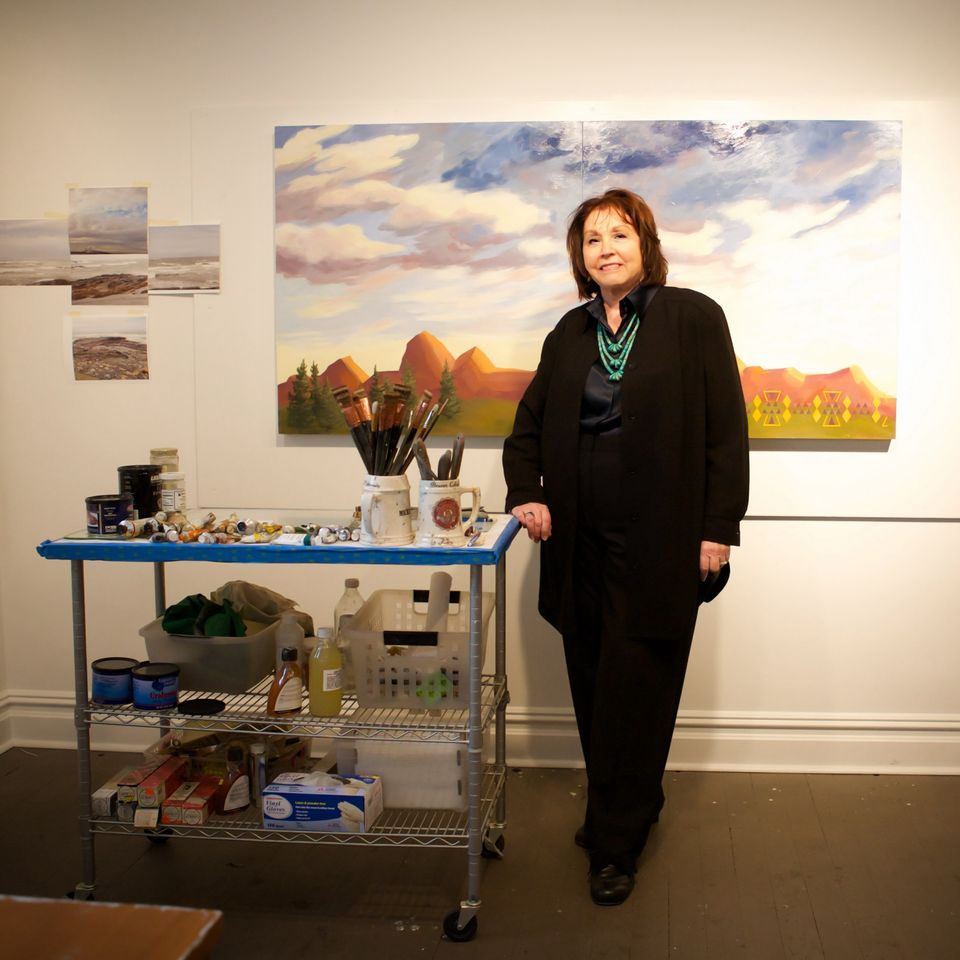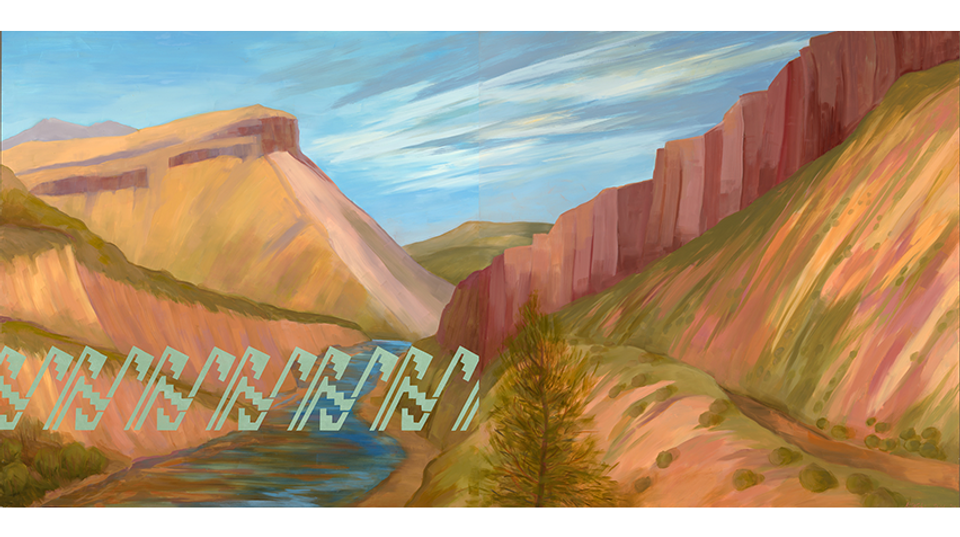Kay WalkingStick

Photograph of Kay WalkingStick in her studio, Easton, PA, 2014. Photo by Julia Maloof Verderosa. © 2014 Julia Maloof Verderosa
- Born
- Syracuse, New York, United States
- Biography
“One’s entire personhood is represented in art and I am who I am––a biracial woman. I’m a Cherokee, I was raised in a White culture, and both are in everything I do, whether it’s landscape or figures or abstraction. It is always there because I’m there.”
–– Kay WalkingStick, 2023
Kay WalkingStick is a painter whose unwavering commitment to the medium addresses interrelated themes of Native history, feminism, spirituality, cultural memory, embodiment, and land.
The child of a Scotch-Irish mother and Cherokee Nation father, WalkingStick was raised in a household of working women. While her father was seldom present during her childhood, her white mother raised her to be independent and to take pride in her Cherokee heritage. By 1960, WalkingStick received her BFA from Beaver College (1959), married, moved to New Jersey, and started a family. Although reconciling her roles as mother and artist was challenging, WalkingStick remained committed to her artistic practice. She visited galleries and museums in New York City but wanted to make work that was distinctly her own. In the early 1970s, amid the fervor of the women’s movement and the sexual revolution, WalkingStick created brightly painted hard-edged silhouettes, such as in Two Women II (1973, SAAM), that joyously declared women’s autonomy.
While pursuing her MFA at Pratt Institute (1973–75), WalkingStick turned to dark-hued, deeply textured abstractions grounded in her experiences of grieving the loss of both parents and grappling with her complicated relationship with her father. Around the same time, the rise of the American Indian Movement spurred WalkingStick to confront her heritage as a citizen of the Cherokee Nation, and she developed works based on research into historical Native figures, notably Nimiipuu (Nez Perce Tribe) leader Chief Joseph.
In 1984, WalkingStick began experimenting with a diptych format as the ideal view to unite two kinds of memory: “snapshot” memory, which she saw as the “fleeting” view of the present, and “mythic” memory, embodying the “spiritual, long-term” comprehension of past and future. In works like With Love to Marsden (1995, SAAM), she painted with her bare hands to combine a representational landscape with its abstraction, highlighting the relationship between what can be seen and felt.
WalkingStick began painting specific sites in the United States in the early 2000s, disrupting the dominant tradition of Euro-American landscape painting that historically denied the presence of Native Peoples. She develops the paintings by first drawing and photographing a location, then researching the site’s Native history and art. As exemplified in Orilla Verde at the Rio Grande (2012, SAAM), the result is a monumental vista overlaid with stenciled patterns borrowed from WalkingStick’s research on Ancestral Pueblo pots that originate from around the same area along the Rio Grande, held in the Smithsonian’s NMAI. The multilayered representation reclaims the site as Native land.
In using her work to variously declare Native presence and persistence, WalkingStick consistently realizes her career-long ambition to be “part of bringing Native art into the mainstream.”
Authored by Gabriella Shypula, American Women’s History Initiative Writer and Editor, 2024.
Videos
Exhibitions
Related Posts





















